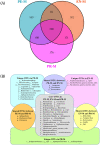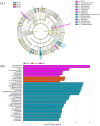Assessment of microbiota diversity in dental unit waterline contamination
- PMID: 35036099
- PMCID: PMC8743008
- DOI: 10.7717/peerj.12723
Assessment of microbiota diversity in dental unit waterline contamination
Abstract
Background: Dental unit waterlines (DUWLs) provide water for handpieces, air/water syringes, and mouth-rinse water outlets. DUWL contamination can negatively affect the operating environment and public health. Therefore, it is important to elucidate the bacterial concentrations and microbial composition in the DUWLs from different dental specialties.
Methods: We collected 350 5-mL dental water samples (from high-speed handpieces, air/water syringes, and mouth-rinse water outlets) from 60 dental chair units (DCUs) at a dental hospital to determine the bacterial concentrations by culture methods. Meanwhile, to investigate the diversity and community structure of microbe in the DUWLs, 17 high-quality DNA from 60 250-mL air/water syringe water samples, which were collected from the same 60 DCUs, were analyzed using 16S rDNA high-throughput sequencing.
Results: The median bacterial concentration was 166 (31.5, 672.5) CFU/mL and the range was 0-3,816,000 CFU/mL. Only 42.6% of the water samples had bacterial concentrations below 100 CFU/mL. The Kruskal-Wallis H-test revealed that the water samples from three dental specialties had significantly different bacterial concentrations (H = 27.441, P < 0.01). High-throughput sequencing results showed significant differences in bacterial community structure between periodontics and the other two dental specialties. In the samples from three dental specialties, 508 OTUs were detected, with 160, 182 and 176 OTUs unique to the periodontics, endodontics and prosthodontics specialties, respectively. Linear discriminant analysis (LDA) effect size (LEfSe) suggested that Hydrocarboniphaga, Zoogloea, Aquabacterium, and Hydrogenophaga were enriched in the periodontics specialty; Acinetobacter, Geothrix, and Desulfovibrio were enriched in the prosthodontics specialty; and Alistipes, Clostridium XIVa, and Serratia were enriched in the endodontics specialty. Seven potentially human-pathogenic genera (Pseudomonas, Acinetobacter, Sphingomonas, Ochrobactrum, Rhizobium, Brevundimonas, and Methylobacterium) with relative abundance exceeding 1% were also detected in the DUWLs.
Conclusions: The bacterial concentrations and microbial composition were influenced by different dental specialties, so a validated disinfection protocol should be used to control DUWL contamination in different dental specialties.
Keywords: Dental unit waterlines; High-throughput sequencing; Microbiota; Water quality.
© 2022 Dang et al.
Conflict of interest statement
The authors declare that they have no competing interests.
Figures




References
-
- Ditommaso S, Giacomuzzi M, Ricciardi E, Memoli G, Zotti CM. Colonization by Pseudomonas aeruginosa of dental unit waterlines and its relationship with other bacteria: suggestions for microbiological monitoring. Journal of Water and Health. 2019;17(4):532–539. doi: 10.2166/wh.2019.240. - DOI - PubMed
Publication types
MeSH terms
Associated data
LinkOut - more resources
Full Text Sources

